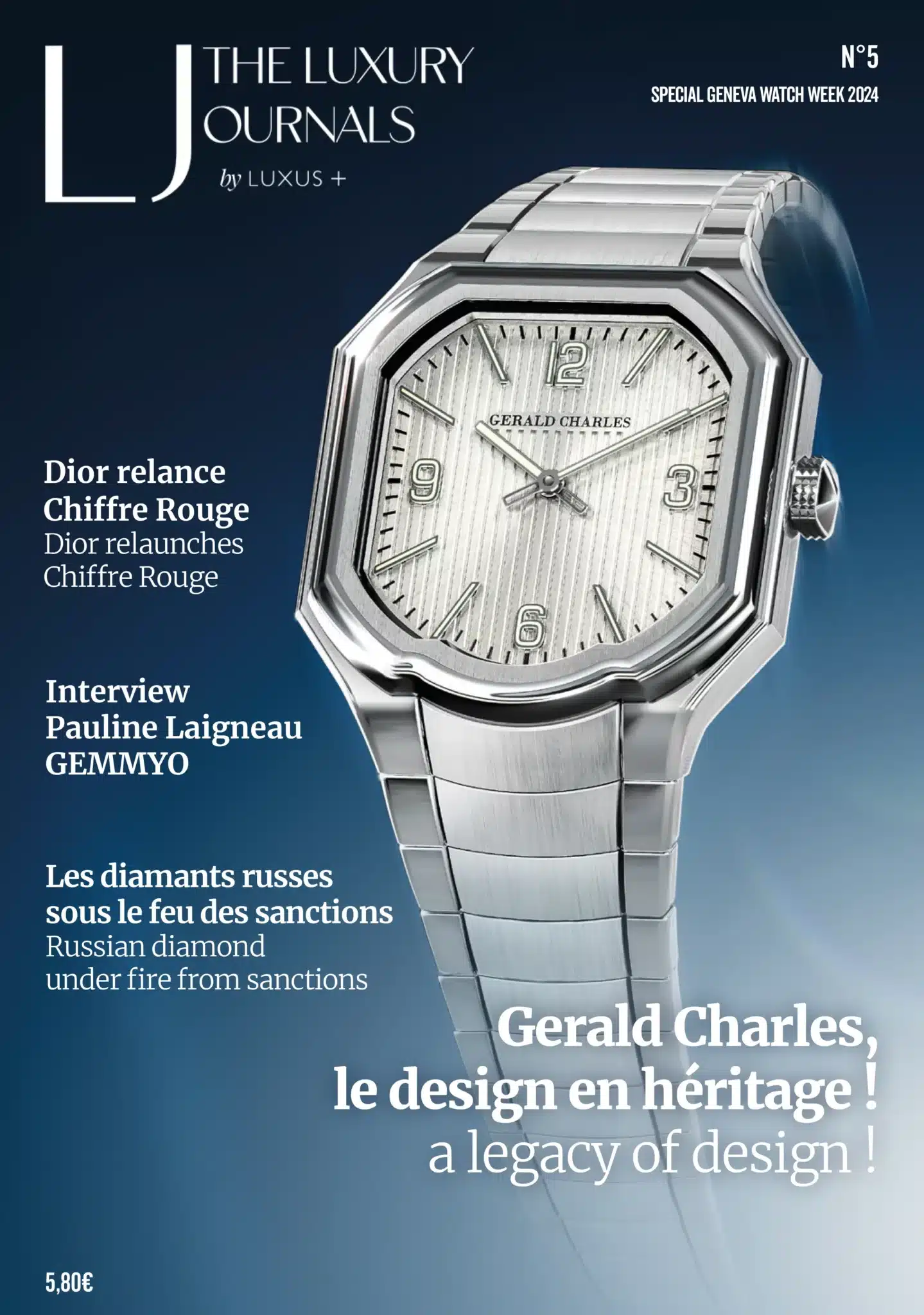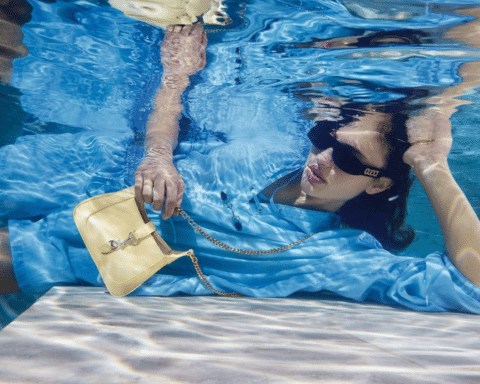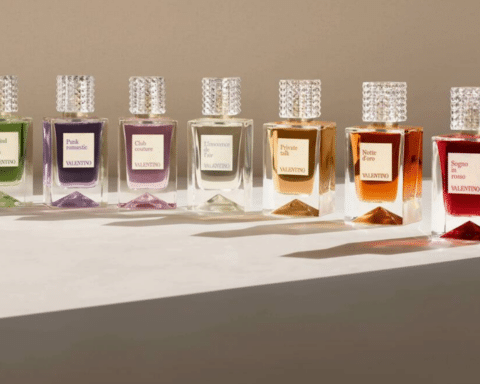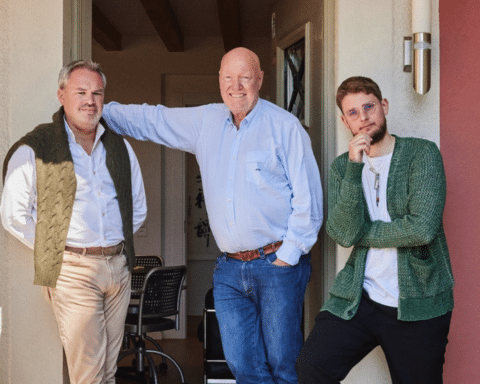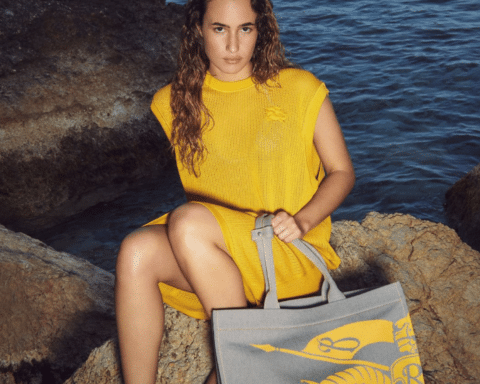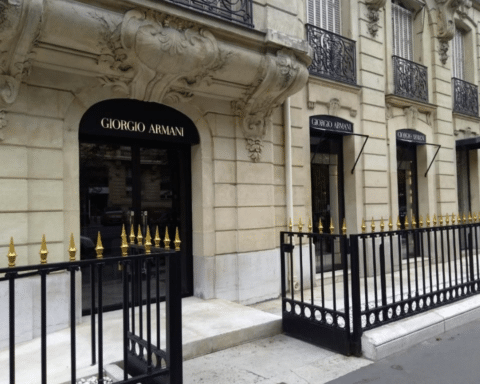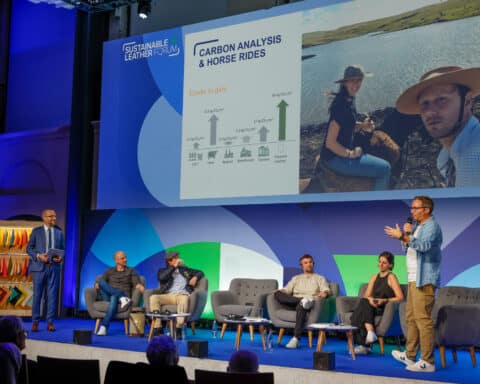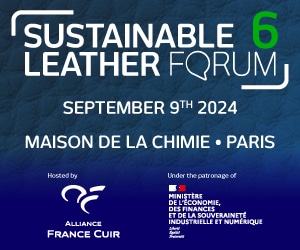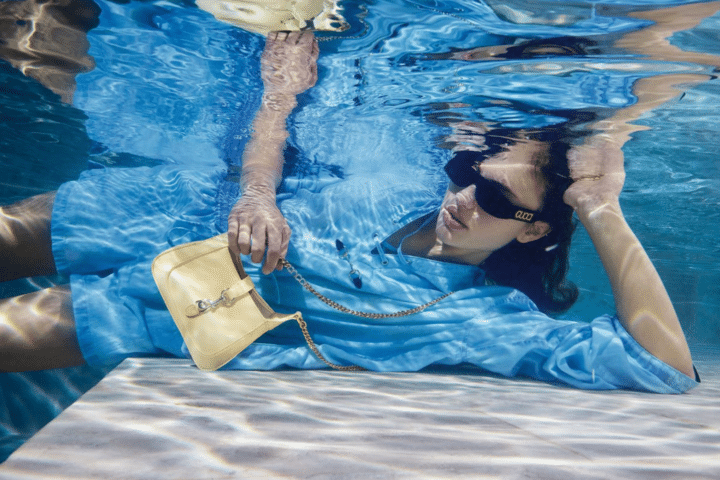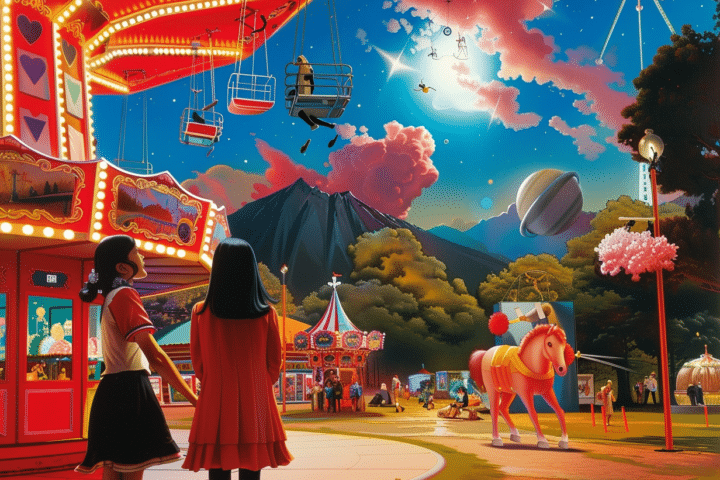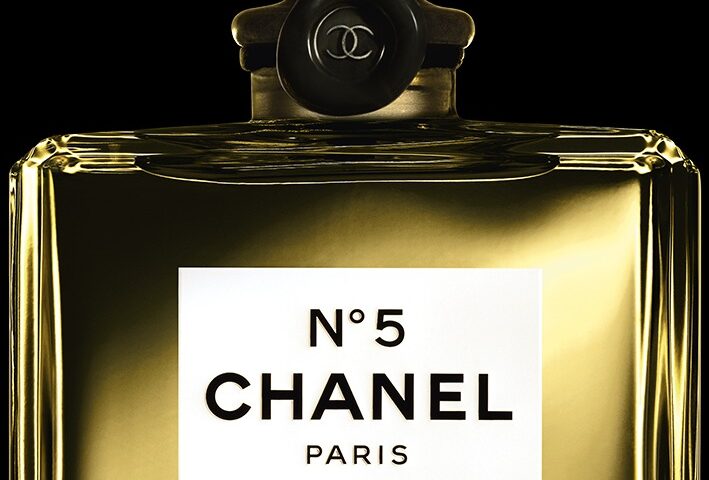[vc_row njt-role=”people-in-the-roles” njt-role-user-roles=”administrator,editor,author,armember”][vc_column][vc_column_text]
Committed since the beginning to finding alternatives to synthetic and animal materials, the British designer innovates once again with a biodegradable sequin, the result of a collaboration with the start-up Radiant Matter.
After biodegradable denim and bags in which PVC has been replaced by a fungus – Mycelium – Stella McCartney, at the forefront of sustainable R&D, is tackling sequin, that essential ornament for catwalks and social evenings.
Voir cette publication sur Instagram
A material that is not usually very eco-friendly. These tiny glittering discs are all too often made from polyester (Mylar) or vinyl (PVC) films. All these stylistic elements pollute the oceans for centuries in the form of microplastics.
According to an Oxfam study (2019) cited by the designer, “every year for the holidays, British women buy 33 million sequined garments, of which 1.7 million end up in landfill after just 5 uses.”
Naturally shiny biomaterials
When faced with ecological challenges, Stella McCartney is used to not going it alone. It has proved this once again by calling on the start-up Radiant Matter, which specialises in the design of a bio-material with an iridescent appearance : BioSequin ©.
Inspired by the ingenuity of nature, the company is developing a new generation of colours and material solutions for the circular economy. It has developed the first laboratory-developed glitter.
Made from cellulose derived from wood – renewable and abundant – the biodegradable glitter developed by Radiant Matter has the advantage of brilliant, non-toxic, colourfast and pigment-free colours. The ethical aspect is not forgotten: the sparkling metallic glitter is free of minerals, metals and associated mining.
A glamorous platform for an anti-plastic moratorium
As the standard-bearer for sustainable development within the LVMH group, Stella McCartney is also committed to making eco-responsible collections glamorous. These qualities are often presented as being contradictory.
To maximise the impact of her initiative, the designer called on her friend and committed supermodel Cara Delevingne to pose on the cover of the April issue of American Vogue.
Here, the star model wears the prototype of a skin-tight jumpsuit made of iridescent BioSequin © developed by the start-up Radiant Matter. All under the sharp eye of Hollywood photographer Annie Leibovitz. An outfit made in the London workshops of Stella McCartney and specially designed for Cara Delevingne.
This will give greater visibility to the bio-textile of Radiant Matter, whose co-founder, Elissa Brunato, is the winner of The Arts Foundation Material Innovation 2022 award.
Founded after 2021, this British start-up has set itself the mission of reducing the fashion and luxury industry’s dependence on plastics, metals and petroleum-based minerals as material resources for colours.
Read also > Kering provides a progress report on its sustainable actions
Featured photo : © Annie Leibovitz[/vc_column_text][/vc_column][/vc_row][vc_row njt-role=”not-logged-in”][vc_column][vc_column_text]
Committed since the beginning to finding alternatives to synthetic and animal materials, the British designer innovates once again with a biodegradable sequin, the result of a collaboration with the start-up Radiant Matter.
After biodegradable denim and bags in which PVC has been replaced by a fungus – Mycelium – Stella McCartney, at the forefront of sustainable R&D, is tackling sequin, that essential ornament for catwalks and social evenings.
Voir cette publication sur Instagram
A material that is not usually very eco-friendly. These tiny glittering discs are all too often made from polyester (Mylar) or vinyl (PVC) films. All these stylistic elements pollute the oceans for centuries in the form of microplastics.
According to an Oxfam study (2019) cited by the designer, “every year for the holidays, British women buy 33 million sequined garments, of which 1.7 million end up in landfill after just 5 uses.”
[…][/vc_column_text][vc_cta h2=”This article is reserved for subscribers.” h2_font_container=”tag:h2|font_size:16|text_align:left” h2_use_theme_fonts=”yes” h4=”Subscribe now !” h4_font_container=”tag:h2|font_size:32|text_align:left|line_height:bas” h4_use_theme_fonts=”yes” txt_align=”center” color=”black” add_button=”right” btn_title=”I SUBSCRIBE !” btn_color=”danger” btn_size=”lg” btn_align=”center” use_custom_fonts_h2=”true” use_custom_fonts_h4=”true” btn_button_block=”true” btn_custom_onclick=”true” btn_link=”url:https%3A%2F%2Fluxus-plus.com%2Fen%2Fsubscriptions-and-newsletter-special-offer-valid-until-september-30-2020-2-2%2F”]Get unlimited access to all articles and live a new reading experience, preview contents, exclusive newsletters…
Already have an account ? Please log in.[/vc_cta][vc_column_text]Featured photo : © Annie Leibovitz[/vc_column_text][/vc_column][/vc_row][vc_row njt-role=”people-in-the-roles” njt-role-user-roles=”subscriber,customer”][vc_column][vc_column_text]
Committed since the beginning to finding alternatives to synthetic and animal materials, the British designer innovates once again with a biodegradable sequin, the result of a collaboration with the start-up Radiant Matter.
After biodegradable denim and bags in which PVC has been replaced by a fungus – Mycelium – Stella McCartney, at the forefront of sustainable R&D, is tackling sequin, that essential ornament for catwalks and social evenings.
Voir cette publication sur Instagram
A material that is not usually very eco-friendly. These tiny glittering discs are all too often made from polyester (Mylar) or vinyl (PVC) films. All these stylistic elements pollute the oceans for centuries in the form of microplastics.
According to an Oxfam study (2019) cited by the designer, “every year for the holidays, British women buy 33 million sequined garments, of which 1.7 million end up in landfill after just 5 uses.”
[…][/vc_column_text][vc_cta h2=”This article is reserved for subscribers.” h2_font_container=”tag:h2|font_size:16|text_align:left” h2_use_theme_fonts=”yes” h4=”Subscribe now !” h4_font_container=”tag:h2|font_size:32|text_align:left|line_height:bas” h4_use_theme_fonts=”yes” txt_align=”center” color=”black” add_button=”right” btn_title=”I SUBSCRIBE !” btn_color=”danger” btn_size=”lg” btn_align=”center” use_custom_fonts_h2=”true” use_custom_fonts_h4=”true” btn_button_block=”true” btn_custom_onclick=”true” btn_link=”url:https%3A%2F%2Fluxus-plus.com%2Fen%2Fsubscriptions-and-newsletter-special-offer-valid-until-september-30-2020-2-2%2F”]Get unlimited access to all articles and live a new reading experience, preview contents, exclusive newsletters…
Already have an account ? Please log in.[/vc_cta][vc_column_text]Featured photo : © Annie Leibovitz[/vc_column_text][/vc_column][/vc_row][vc_row njt-role=”people-in-the-roles” njt-role-user-roles=”subscriber,customer”][vc_column][vc_column_text]


